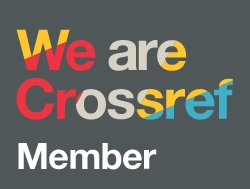Measuring Hepatitis B-related Stigma: A Systematic Review of Questionnaire-based Studies
DOI:
https://doi.org/10.47895/amp.v59i14.9745Keywords:
social stigmas, chronic Hepatitis B, state-of-theart reviewAbstract
Background and Objective. Stigma remains a profound barrier to public health, particularly in managing diseases such as Hepatitis B, which is highly prevalent in hyperendemic regions like the Philippines. The social stigma associated with such health conditions can severely limit access to care and hinder adherence to treatment, exacerbating the overall disease burden. Despite the critical impact of stigma on health outcomes, there is a notable gap in the systematic evaluation of the tools used to measure stigma related to health conditions like Hepatitis B. This study aims to fill this gap by reviewing existing instruments for their methodologies, reliability, and validity to inform the development of a refined tool tailored to the Philippine context.
Methods. A systematic search was conducted across six databases, including PubMed, Cochrane Database of Systematic Reviews, Open Grey, DissOnline, Philippine Health Research Registry (PHRR), and Health Research and Development Information Network (HERDIN), following PRISMA guidelines. The search strategy focused on identifying quantitative and mixed-methods studies using questionnaires to measure HBV-related stigma and discrimination. Studies published between January 1, 1992, and December 31, 2023, were considered. The selection process involved screening for duplicates, reviewing titles and abstracts, and performing a full-text review based on predetermined eligibility criteria.
Results. The initial search yielded 1,198 articles, with 24 duplicates removed. After title and abstract screening, 28 articles were considered for full-text review, resulting in 17 relevant articles in the final analysis with 15 unique instrumentations. The majority of studies employed cross-sectional designs (n=8), with a significant concentration in Asian countries (n=11), indicating a regional focus in HBV stigma research. The review identified a range of questionnaire methodologies, but most studies lacked specificity regarding the type of stigma measured. The Likert Scale was the most commonly used measurement tool, yet few studies provided cut-off values for stigma levels. Validity and reliability testing was reported in 12 articles, including pilot studies, Cronbach’s alpha, and factor analysis.
Conclusion. The lack of a universal methodology and specificity in existing instruments underscores the importance of developing a refined tool that can accurately capture the nuances of stigma and discrimination associated with HBV. The urgent need for standardized, reliable, and culturally sensitive questionnaires is evident, underscoring their importance in developing effective public health strategies and improving treatment outcomes for individuals living with HBV, especially in the Philippines.
Downloads
Published
Issue
Section
License
Copyright (c) 2025 Acta Medica Philippina

This work is licensed under a Creative Commons Attribution-NonCommercial-NoDerivatives 4.0 International License.




.jpg)



